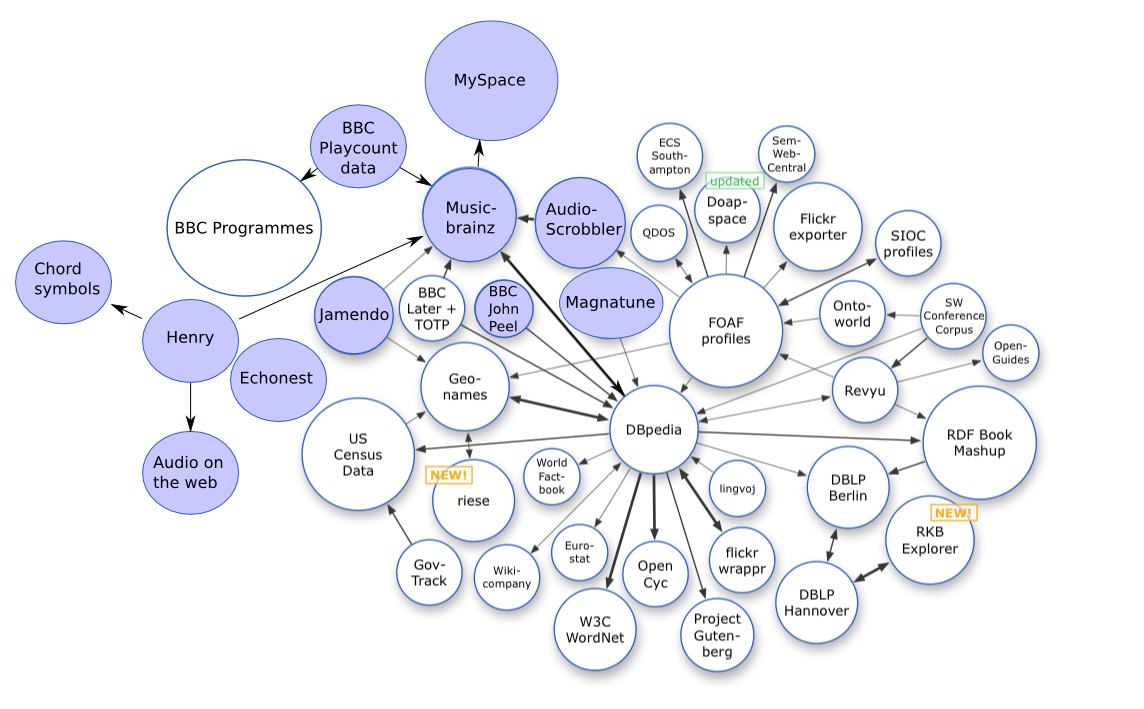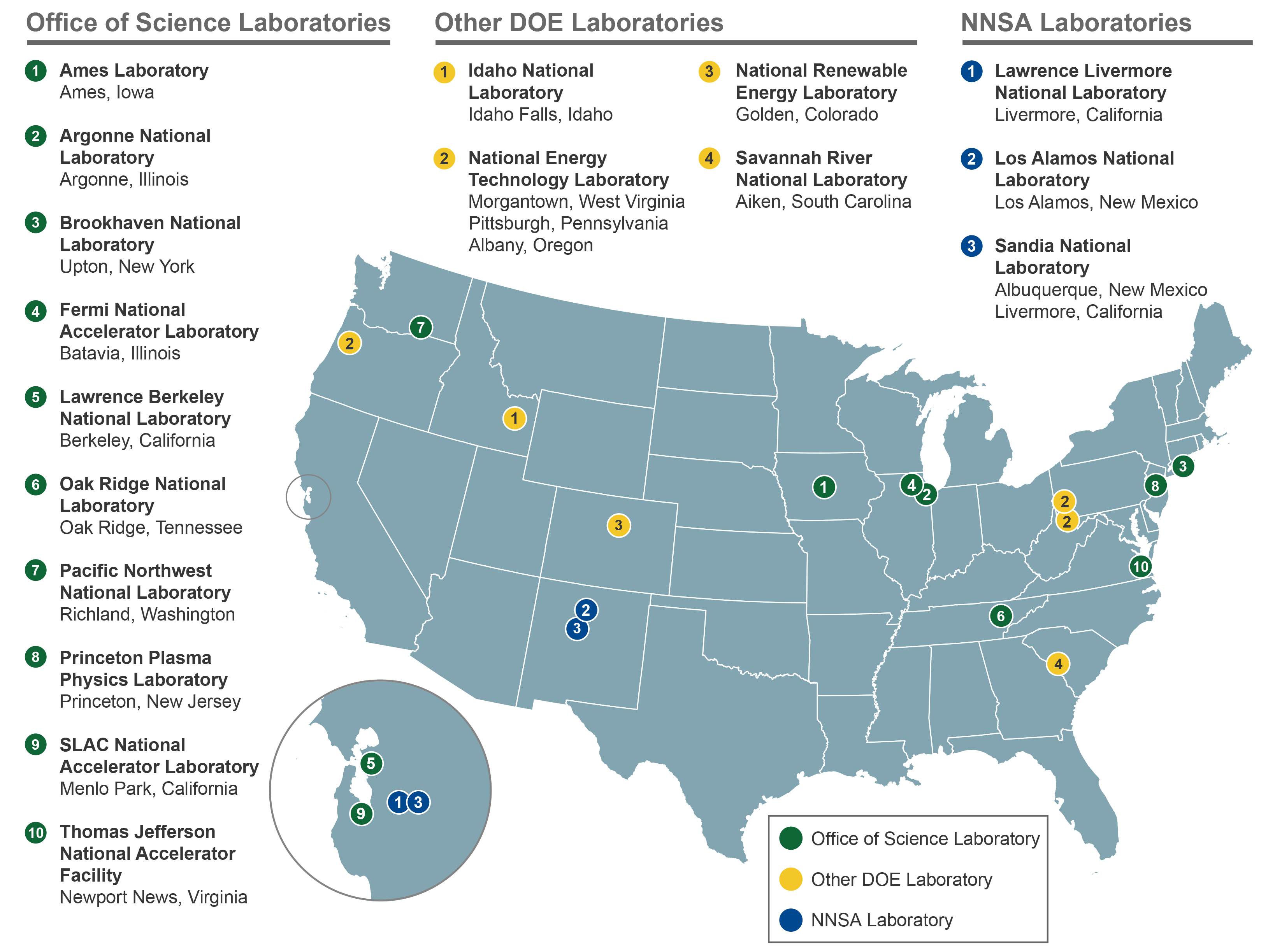|
OpenEI
Open Energy Information (OpenEI) is a website for policy makers, researchers, technology investors, venture capitalists, and market professionals with energy data, information, analyses, tools, images, maps, and other resources. It was established by the United States Department of Energy on 9December 2009. Description OpenEI provides two primary mechanisms for sharing structured information: a semantic wiki (using MediaWiki and the Semantic MediaWiki extension) for collaboratively-managed resources, and a dataset upload mechanism for contributor-controlled resources. In both cases, the resulting data is made available via Linked Data standards whenever possible. Development of the system is led by the National Renewable Energy Laboratory, in collaboration with other national laboratories. OpenEI, as part of the U.S. Department of Energy's effort to make data open, is in the public domain under the CC0 public domain dedication. Users search, edit, add and access data in O ... [...More Info...] [...Related Items...] OR: [Wikipedia] [Google] [Baidu] |
OpenEI Screenshot
Open Energy Information (OpenEI) is a website for policy makers, researchers, technology investors, venture capitalists, and market professionals with energy data, information, analyses, tools, images, maps, and other resources. It was established by the United States Department of Energy on 9December 2009. Description OpenEI provides two primary mechanisms for sharing structured information: a semantic wiki (using MediaWiki and the Semantic MediaWiki extension) for collaboratively-managed resources, and a dataset upload mechanism for contributor-controlled resources. In both cases, the resulting data is made available via Linked Data standards whenever possible. Development of the system is led by the National Renewable Energy Laboratory, in collaboration with other national laboratories. OpenEI, as part of the U.S. Department of Energy's effort to make data open, is in the public domain under the CC0 public domain dedication. Users search, edit, add and access data in O ... [...More Info...] [...Related Items...] OR: [Wikipedia] [Google] [Baidu] |
Wind ENergy Data & Information (WENDI) Gateway
The Wind ENergy Data and Information (WENDI) Gateway was established by the Environmental Sciences Division of Oak Ridge National Laboratory in March 2010 to support the United States Department of Energy's Wind and Hydropower Technologies Program. It provided a digital library for wind energy-related data and information from a wide spectrum of sources—including data centers, scientific and technical journals, and geographic information systems (GIS), as well as the websites of government agencies, corporations and trade organizations. The gateway was taken offline after funding ended in August 2012. Much of its content was incorporated into the OpenEI site. Components The WENDI Gateway had two main components: a wind energy metadata clearinghouse and the wind energy WebGIS Application. The WENDI Gateway also provided pages about the basics of how wind energy works, lists of major turbine manufacturers, a list of renewable resource educational programs, and a page about w ... [...More Info...] [...Related Items...] OR: [Wikipedia] [Google] [Baidu] |
Semantic Wiki
A semantic wiki is a wiki that has an underlying model of the knowledge described in its pages. Regular, or syntactic, wikis have structured text and untyped hyperlinks. Semantic wikis, on the other hand, provide the ability to capture or identify information about the data within pages, and the relationships between pages, in ways that can be queried or exported like a database through semantic queries. Semantic wikis were first proposed in the early 2000s, and began to be implemented seriously around 2005. As of 2021, well-known semantic wiki engines are Semantic MediaWiki and Wikibase. Key characteristics Formal notation The knowledge model found in a semantic wiki is typically available in a formal language, so that machines can process it into an entity-relationship model or relational database. The formal notation may be included in the pages themselves by users, as in Semantic MediaWiki, or it may be derived from the pages or the page names or the means of linking ... [...More Info...] [...Related Items...] OR: [Wikipedia] [Google] [Baidu] |
Semantic MediaWiki
Semantic MediaWiki (SMW) is an extension to MediaWiki that allows for annotating semantic data within wiki pages, thus turning a wiki that incorporates the extension into a semantic wiki. Data that has been encoded can be used in semantic searches, used for aggregation of pages, displayed in formats like maps, calendars and graphs, and exported to the outside world via formats like RDF and CSV. Authors Semantic MediaWiki was initially created by Markus Krötzsch, Denny Vrandečić and Max Völkel, and was first released in 2005. Its development was initially funded by the EU-funded FP6 project SEKT (CORDIS site), and was later supported in part by Institute AIFB of the University of Karlsruhe (later renamed the Karlsruhe Institute of Technology). Currently James Hong Kong is the lead developer , while the other core developer is Jeroen De Dauw. Basic syntax Every semantic annotation within SMW is a "property" connecting the page on which it resides to some other piece of ... [...More Info...] [...Related Items...] OR: [Wikipedia] [Google] [Baidu] |
Governmental Organization
A government or state agency, sometimes an appointed commission, is a permanent or semi-permanent organization in the machinery of government that is responsible for the oversight and administration of specific functions, such as an administration. There is a notable variety of agency types. Although usage differs, a government agency is normally distinct both from a department or ministry, and other types of public body established by government. The functions of an agency are normally executive in character since different types of organizations (''such as commissions'') are most often constituted in an advisory role—this distinction is often blurred in practice however, it is not allowed. A government agency may be established by either a national government or a state government within a federal system. Agencies can be established by legislation or by executive powers. The autonomy, independence, and accountability of government agencies also vary widely. History Early ex ... [...More Info...] [...Related Items...] OR: [Wikipedia] [Google] [Baidu] |
Amazon Web Services
Amazon Web Services, Inc. (AWS) is a subsidiary of Amazon that provides on-demand cloud computing platforms and APIs to individuals, companies, and governments, on a metered pay-as-you-go basis. These cloud computing web services provide distributed computing processing capacity and software tools via AWS server farms. One of these services is Amazon Elastic Compute Cloud (EC2), which allows users to have at their disposal a virtual cluster of computers, available all the time, through the Internet. AWS's virtual computers emulate most of the attributes of a real computer, including hardware central processing units (CPUs) and graphics processing units (GPUs) for processing; local/ RAM memory; hard-disk/ SSD storage; a choice of operating systems; networking; and pre-loaded application software such as web servers, databases, and customer relationship management (CRM). AWS services are delivered to customers via a network of AWS server farms located throughout the world ... [...More Info...] [...Related Items...] OR: [Wikipedia] [Google] [Baidu] |
Open Data
Open data is data that is openly accessible, exploitable, editable and shared by anyone for any purpose. Open data is licensed under an open license. The goals of the open data movement are similar to those of other "open(-source)" movements such as open-source software, hardware, open content, open specifications, open education, open educational resources, open government, open knowledge, open access, open science, and the open web. The growth of the open data movement is paralleled by a rise in intellectual property rights. The philosophy behind open data has been long established (for example in the Mertonian tradition of science), but the term "open data" itself is recent, gaining popularity with the rise of the Internet and World Wide Web and, especially, with the launch of open-data government initiatives such as Data.gov, Data.gov.uk and Data.gov.in. Open data can be linked data - referred to as linked open data. One of the most important forms of open da ... [...More Info...] [...Related Items...] OR: [Wikipedia] [Google] [Baidu] |
MediaWiki Websites
MediaWiki is a free and open-source wiki software. It is used on Wikipedia and almost all other Wikimedia websites, including Wiktionary, Wikimedia Commons and Wikidata; these sites define a large part of the requirement set for MediaWiki. It was developed for use on Wikipedia in 2002, and given the name "MediaWiki" in 2003. MediaWiki was originally developed by Magnus Manske and improved by Lee Daniel Crocker. Magnus Manske's announcement of "PHP Wikipedia", wikipedia-l, August 24, 2001 Its development has since then been coordinated by the Wikimedia Foundation. MediaWiki is written in the PHP programming language and stores all text content into a database. The software is optimized to efficiently handle large projects, which can have terabytes of content and hundreds of thousands of views per second. Because Wikipedia is one of the world's largest websites, achieving scalability through multiple layers of caching and database replication has been a major concern fo ... [...More Info...] [...Related Items...] OR: [Wikipedia] [Google] [Baidu] |
Amazon Elastic Compute Cloud
Amazon Elastic Compute Cloud (EC2) is a part of Amazon.com's cloud-computing platform, Amazon Web Services (AWS), that allows users to rent virtual computers on which to run their own computer applications. EC2 encourages scalable deployment of applications by providing a web service through which a user can boot an Amazon Machine Image (AMI) to configure a virtual machine, which Amazon calls an "instance", containing any software desired. A user can create, launch, and terminate server-instances as needed, paying by the second for active servershence the term "elastic". EC2 provides users with control over the geographical location of instances that allows for latency optimization and high levels of redundancy. In November 2010, Amazon switched its own retail website platform to EC2 and AWS. History Amazon announced a limited public beta test of EC2 on August 25, 2006, offering access on a first-come, first-served basis. Amazon added two new instance types (Large and Extr ... [...More Info...] [...Related Items...] OR: [Wikipedia] [Google] [Baidu] |
National Renewable Energy Laboratory
The National Renewable Energy Laboratory (NREL) in the US specializes in the research and development of renewable energy, energy efficiency, energy systems integration, and sustainable transportation. NREL is a federally funded research and development center sponsored by the Department of Energy and operated by the Alliance for Sustainable Energy, a joint venture between MRIGlobal and Battelle. Located in Golden, Colorado, NREL is home to the National Center for Photovoltaics, the National Bioenergy Center, and the National Wind Technology Center. History The Solar Energy Research, Development and Demonstration Act of 1974 established the Solar Energy Research Institute, which opened in 1977 and was operated by MRIGlobal. Under the Jimmy Carter administration, its activities went beyond research and development in solar energy as it tried to popularize knowledge about already existing technologies, like passive solar. During the Ronald Reagan administration the ... [...More Info...] [...Related Items...] OR: [Wikipedia] [Google] [Baidu] |
Energy Information Administration
The U.S. Energy Information Administration (EIA) is a principal agency of the U.S. Federal Statistical System responsible for collecting, analyzing, and disseminating energy information to promote sound policymaking, efficient markets, and public understanding of energy and its interaction with the economy and the environment. EIA programs cover data on coal, petroleum, natural gas, electric, renewable and nuclear energy. EIA is part of the U.S. Department of Energy. Background The Department of Energy Organization Act of 1977 established EIA as the primary federal government authority on energy statistics and analysis, building upon systems and organizations first established in 1974 following the oil market disruption of 1973. EIA conducts a comprehensive data collection program that covers the full spectrum of energy sources, end uses, and energy flows; generates short- and long-term domestic and international energy projections; and performs informative energy analyses. ... [...More Info...] [...Related Items...] OR: [Wikipedia] [Google] [Baidu] |
United States Department Of Energy National Laboratories
The United States Department of Energy National Laboratories and Technology Centers is a system of facilities and laboratories overseen by the United States Department of Energy (DOE) for scientific and technological research. Sixteen of the seventeen DOE national laboratories are federally funded research and development centers administered, managed, operated and staffed by private-sector organizations under management and operating (M&O) contract with DOE (with the National Energy Technology Laboratory being the exception). History The system of centralized national laboratories grew out of the massive scientific endeavors of World War II, in which new technologies such as radar, the computer, the proximity fuse, and the atomic bomb proved decisive for the Allied victory. Though the United States government had begun seriously investing in scientific research for national security in World War I, it was only in late 1930s and 1940s that monumental amounts of resources w ... [...More Info...] [...Related Items...] OR: [Wikipedia] [Google] [Baidu] |





